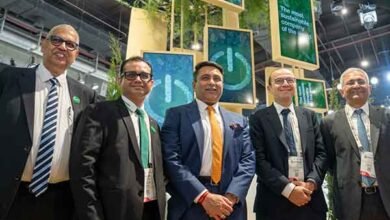India’s $10 Billion Investment to Establish Itself as a Global Semiconductor Hub
Oman Horizon Bulletin

New Delhi, 2025 – India is making significant strides toward becoming a global semiconductor manufacturing powerhouse, aligning with Prime Minister Narendra Modi’s vision of transforming the country into a self-reliant hub for chip production by 2035.
Currently, India imports over 90% of its semiconductors, relying heavily on international suppliers. However, with the launch of a $10 billion incentive program, the country is determined to build a robust domestic semiconductor ecosystem and reduce its dependence on foreign manufacturers. This initiative also aims to boost job creation and position India as a key player in the global supply chain.
The India Semiconductor Mission (ISM)
At the heart of India’s semiconductor strategy is the India Semiconductor Mission (ISM), launched in 2022 under the Digital India Corporation. The ISM focuses on developing India’s manufacturing, packaging, and design capabilities, ensuring a steady supply of semiconductors essential for smartphones, automobiles, medical devices, and defense equipment.
India is offering attractive incentives to encourage global companies to establish semiconductor fabrication and display manufacturing plants within the country. The government is covering up to 50% of project costs, making India an appealing destination for international investors.
Key Projects and Developments
Several major projects have already been announced under this initiative, including:
- A semiconductor fabrication facility in Gujarat
- An Outsourced Semiconductor Assembly and Test (OSAT) facility in Gujarat
- Another OSAT facility in Assam
These projects represent a major step toward realizing India’s long-term semiconductor ambitions.
Global Partnerships and Future Growth
India is actively partnering with countries such as the United States, Japan, and Taiwan to leverage their expertise in semiconductor technology and advanced manufacturing. These collaborations are crucial for technology transfer, investment growth, and integrating India into the global semiconductor supply chain.
Srini Chinamilli, CEO of semiconductor firm Tessolve, describes India’s goal as “bold but achievable.” He emphasizes that with a focus on infrastructure development and technical expertise, India has the potential to become a key player in the semiconductor industry.
While India has made significant progress, continued investment in skill development and emerging technologies will be essential for maintaining momentum. Experts believe that India’s push toward semiconductor self-sufficiency will not only strengthen its economy but also enhance global supply chain resilience, especially in light of disruptions seen during the COVID-19 pandemic.
India’s approach serves as a valuable model for other nations, particularly those seeking economic diversification and technological advancement. Countries like South Africa, rich in essential minerals for semiconductor production, could follow India’s lead by investing in local manufacturing capabilities rather than exporting raw materials.
With continued commitment, strong policies, and strategic partnerships, India is well on its way to becoming a global semiconductor hub, fostering innovation and driving sustainable economic growth.
For all the latest news from Oman and GCC, follow us on Instagram, like us on Facebook & subscribe to our YouTube Channel, which is updated daily.





